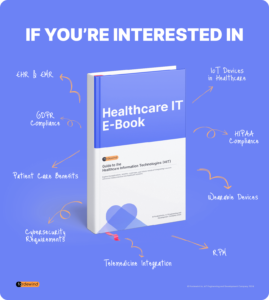Embedded development in the context of the Internet of Things (IoT) refers to the process of creating software and firmware for the microcontrollers and embedded systems that power IoT devices. IoT devices are typically small, resource-constrained, and connected to the internet, and they are used in a wide range of applications, from smart home devices and wearables to industrial sensors and remote monitoring systems.
Embedded Development
Involves designing and programming computer systems integrated into hardware, powering devices like IoT sensors and automotive control systems.
Embedded development Services
Custom Firmware Development
Hardware Design
Board Support Package Development
Wireless Communication
Testing and Quality Assurance
RTOS Development
Key components and considerations
Hardware Selection
Firmware Development
Sensors and Actuators
Security
Cloud Integration
Connectivity

Mobile App Development
The process involves creating software applications for smartphones and tablets, offering a wide range of functionalities to cater to diverse user needs.

Cloud Development
The process of building and managing software in cloud-based environments, enabling efficient, scalable, and cost-effective application development and deployment.

Outstaffing
A business practice that involves hiring external professionals or a third-party company to provide specific services.

Outsourcing
A business practice in which an organization contracts out certain tasks, processes, or functions to external service providers or companies.
FAQ
-
How long does it take to complete an embedded development project?
The project timeline depends on factors like project complexity, requirements, and resources. Some projects can be completed in a few weeks, while others may take several months or more.
-
What is the process of getting started with embedded development services for my project?
The process typically begins with a consultation to understand your project’s requirements and goals. Then, the development team creates a customized plan and proceeds with hardware and software design, development, testing, and deployment.
-
What industries benefit from embedded development services?
Embedded development services are used in various industries, including healthcare, automotive, smart home, industrial automation, agriculture, and more.
-
Do you offer post-deployment support and maintenance services?
Many embedded development service providers offer ongoing support and maintenance to ensure that your embedded systems continue to operate smoothly and receive updates and improvements as needed.
Contact Us
Kyiv, Ukraine
19 Koval's'kyi Lane, Kyiv, Ukraine
+380967764322
contact@fordewind.io
Warsaw, Poland
Mokotów, Warsaw, Poland
+48452478282
contact@fordewind.io
Vancouver, Canada
W Georgia St, Vancouver, Canada
+16047649232
contact@fordewind.io
Tallinn, Estonia
Kaupmehe 7-120, Kesklinna, Tallinn, Harju 10114, Estonia
contact@fordewind.io
